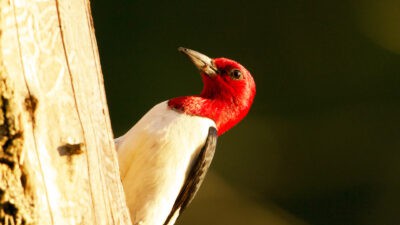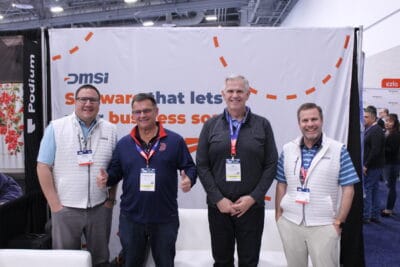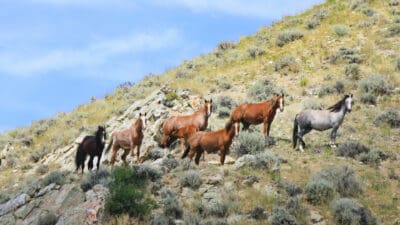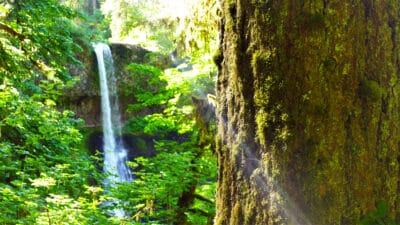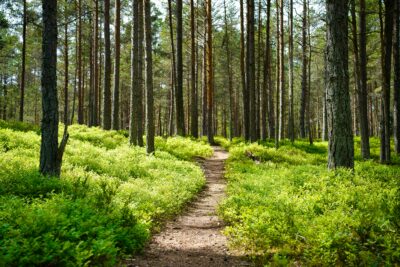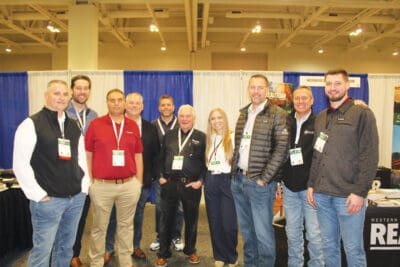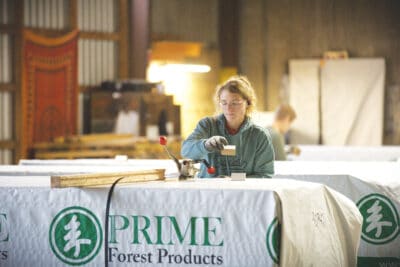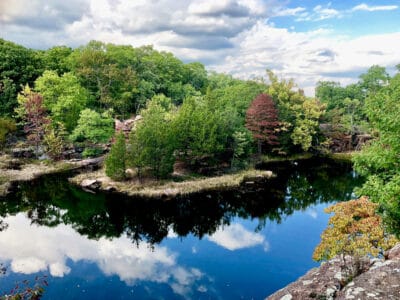
Panels for construction and industrial applications can be manufactured in a variety of ways—as structural plywood, oriented strand board (OSB) or other wood-based panel products.
Some structural plywood panels are manufactured under Voluntary Product Standard PS 1 for Structural Plywood, developed cooperatively by the plywood industry, user groups and the U.S. Department of Commerce. Other structural plywood panels, however, as well as OSB panels, are manufactured under Voluntary Product Standard PS 2, Performance Standard for Wood Structural Panels, that establishes performance criteria for specific designated construction applications.
These wood structural panels, collectively known as APA Performance Rated Panels, are easy to use and specify because the recommended end use and maximum support spacing, or span rating, is clearly indicated in the APA trademark located on the panel.
Structural panels are available in a variety of finishes, thicknesses and bond classifications. APA – The Engineered Wood Association provides guidance on the differences to help select and specify the right one for the indented application.
Veneer Grade Designations
Structural panel grades are generally identified in terms of the plywood veneer grades used on the face and back of the panel (e.g., A-B, B-C), or by a name suggesting the panel’s intended end use (e.g., APA RATED SHEATHING, APA RATED STURD-I-FLOOR—also known as single floor).
A: Smooth, paintable. Not more than 18 neatly made repairs, boat, sled or router type, and parallel to grain, permitted. Wood or synthetic repairs permitted. May be used for natural finish in less demanding applications.
B: Solid surface. Shims, sled or router repairs, and tight knots to 1 inch across grain permitted. Wood or synthetic repairs permitted. Some minor splits permitted.
C (Plugged): Improved C veneer with splits limited to 1/8-inch wide and knotholes or other open characteristics limited to 1/4 x 1/2 inch. Wood or synthetic repairs permitted. Admits some broken grain.
C: Tight knots to 1-1/2 inches. Knotholes to 1 inch across grain and some to 1-1/2 inches if total width of knots and knotholes is within specified limits. Synthetic or wood repairs. Discoloration and sanding defects that do not impair strength permitted. Limited splits allowed.
D: Knots and knotholes to 2-1/2-inch width across grain and 1/2 inch larger within specified limits. Limited splits are permitted. Limited to Exposure 1.
Bond Classification – Exterior vs. Exposure 1
APA trademarked panels may be produced in two moisture-resistant bond classifications—Exterior and Exposure 1.
Exterior Panels: Have bonds capable of withstanding repeated wetting and redrying or long-term exposure to weather or other conditions of similar severity.
Exposure 1 Panels: Suitable for uses not involving long-term exposure to weather. Panels classified as Exposure 1 are intended to resist the effects of moisture on structural performance during construction or similar conditions. Exposure 1 panels may also be used when exposure to the outdoors is protected from direct exposure, such as the underside of panels at roof overhangs, although appearance characteristics of the panel grade should also be considered. Exposure 1 panels are made with the same exterior adhesives used in Exterior panels. However, because other panel compositional factors may affect bond performance, only Exterior panels should be used for long-term exposure to the weather.
Performance Category
The term “Performance Category” is defined within PS 1 and PS 2 as a panel designation related to the panel thickness range that is linked to the nominal panel thickness designations used in the International Building Code (IBC) and International Residential Code (IRC). For purposes of labeling, abbreviations PERF CAT, CAT or Category are permitted within the panel grade mark. The 2018 and 2015 International Building Code (IBC) and International Residential Code (IRC) state that the Performance Category value shall be used as the “nominal panel thickness” or “panel thickness” whenever referenced in the code.
Group Number
Structural plywood can be manufactured from over 70 species of wood. These species are divided on the basis of strength and stiffness into five Groups under PS 1. Strongest species are in Group 1, the next strongest in Group 2 and so on.
The Group number that appears in the trademark on some APA trademarked panels, primarily panels with no span rating, is based on the species used for face and back veneers or upon equivalent strength testing of the panel. Where face and back veneers are not from the same species Group, the higher Group number is used, except for sanded panels 3/8 Category and less and decorative panels of any thickness. These are identified by face species because they are chosen primarily for appearance and used in applications where structural integrity is not critical.
Sanded panels greater than 3/8 Category are identified by face species if C or D grade backs are at least 1/8 inch and are no more than one species group number larger. Some species are used widely in plywood manufacture; others rarely. Check local availability if a particular species is desired.
Specification Guidelines for Ordering Panels
Sanded and Touch-Sanded Panels: Designate Performance Category, APA trademark, grade, Group number, bond classification, dimensions, number of pieces. For example: 3/4 Category APA A-A, Group 1, Exterior, nom. 4×8, 100 pcs. Designate “sanded face” if panels are to be used under resilient flooring.
Performance Rated Panels: Designate Performance Category, APA trademark, grade, span rating, bond classification, dimensions, number of pieces. For example: 15/32 Category APA RATED SHEATHING, 32/16, Exposure 1, nom. 4×8, 100 pcs. Note “square edge” or “tongue-and-groove” as desired.
Rated Siding: Designate Performance Category, APA trademark, face grade (for APA RATED SIDING 303), span rating, texture, pattern, dimensions, number of pieces. For example: 19/32 Category APA RATED SIDING 303-18-W, 16 oc, rough-sawn Texture 1-11, grooves 4″ o.c., nom.
Concrete Form: Designate Performance Category, APA trademark, Class, dimensions, number of pieces. For example: 3/4 Category APA PLYFORM Class I, nom. 4×8, 100 pcs. Plyform panels are manufactured only as Exterior panels and are available mill-oiled and edge-sealed (OES) if specified.
Overlaid Panels: Designate Performance Category, APA trademark, grade, Group number, dimensions, number of pieces. For example: 1/2 Category APA MEDIUM DENSITY OVERLAY (MDO) CONCRETE FORM or (APA RATED SIDING 303-OL in the case of overlaid panels produced under the APA RATED SIDING 303 manufacturing specification), Group 1, nom. 4×8, 100 pcs.
For even more in-depth information and guidance, download our free Panel Selection and Specification Guide at apawood.org.

